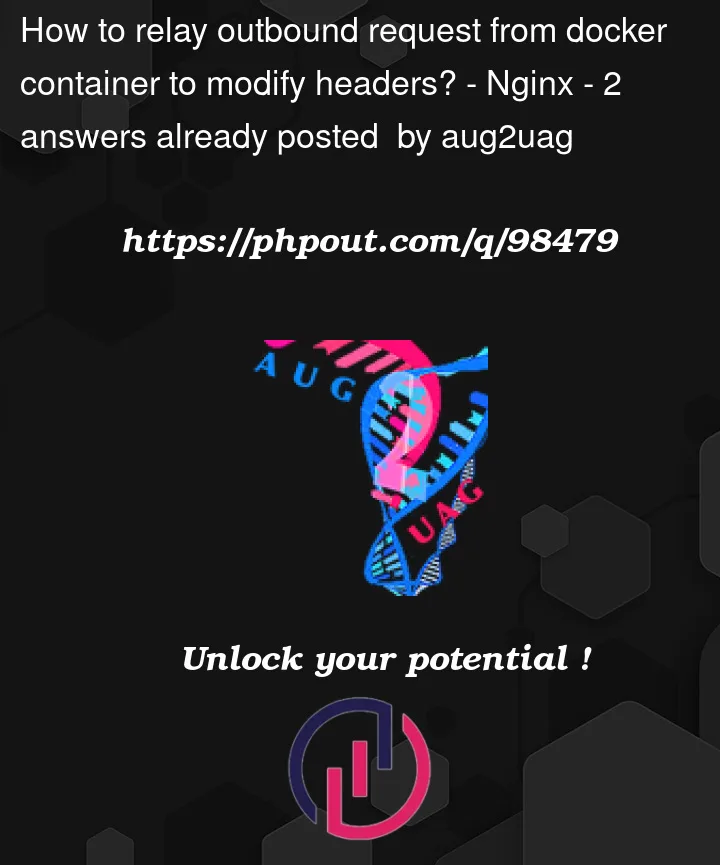I have an application that is running in Docker configured with an NGINX reverse proxy. The application is a binary, I don’t have source code and there’s no way to modify the header of an HTTP request from the app itself. My goal is to append a header field before the request is dispatched out of the host machine:
/// @dev some http proxy or similar
listener(PORT, function(request) {
// 1) modifies header
request.setHeader('FOO', 'bar')
// 2) passes through to original or intended destination
request.continue()
})
The key is to modify the request’s header within the host machine where the Docker app is running.
I looked at MITM proxies and to reroute the Docker outbound traffic with iptables or socat.
Is there anything you would suggest for this operation?




2
Answers
You could use Traefik reverse proxy v2.4+ with Traefik Pilot enabled and a plugin like Header transformation.
You run Traefik as a container which routes the traffic to the other containers. You can then link your instance to Traefik Pilot using a token, which enables plugins. If you use labels in a docker-compose.yml file:
To add the plugin you can also add labels to the Traefik service and to your app too:
You can also use other configuration files in YAML or TOML, everything is shown in the documentations.
To add a header to an outgoing response, simply use
add_headerdirective:To add a header to an outgoing request you can try a forward proxy:
This will work if you can make your application to send all outgoing requests to
127.0.0.121:80(the forward proxy) instead of actual targets. For example you can make the legacy app container to use a dedicated DNS server, which will say that every host is on127.0.0.121(or any other value).